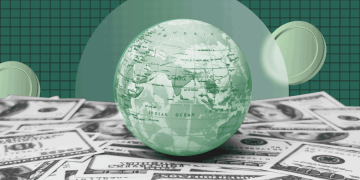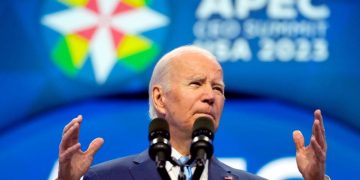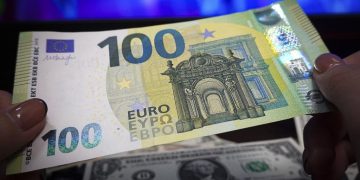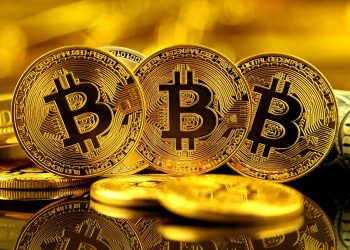Introduction
Interest rate decisions by central banks, particularly in the U.S. and Europe, play a pivotal role in shaping global financial markets. As two of the world’s largest economic regions, the monetary policies of the United States Federal Reserve (Fed) and the European Central Bank (ECB) influence investor behavior, asset prices, and capital flows across borders. Recent interest rate adjustments in these regions have garnered widespread attention as they shape the global economic outlook, investment strategies, and market dynamics.
In this article, we will explore the impact of U.S. and European interest rate adjustments on global investors, delving into how changes in interest rates in these regions affect investment decisions, global asset prices, currency markets, and risk appetites. By examining the key drivers of interest rate decisions in the U.S. and Europe, the potential economic outcomes, and the broader implications for investment, this article aims to provide insights into the strategies global investors should adopt in response to rate changes in these two major regions.
Section 1: The Role of Interest Rates in Financial Markets
Interest rates are one of the primary tools used by central banks to control inflation and influence economic growth. Central banks like the U.S. Federal Reserve and the European Central Bank adjust interest rates to either stimulate economic activity or cool down inflationary pressures. The key ways in which interest rates affect financial markets and investor behavior include:
- Cost of Borrowing: Interest rates directly impact the cost of borrowing for businesses, consumers, and governments. Higher rates increase borrowing costs, potentially leading to reduced spending and investment.
- Investment Yield: Higher interest rates generally make fixed-income investments, such as bonds, more attractive, as they offer better returns. Conversely, lower rates tend to boost demand for riskier assets such as equities and real estate, which may offer higher returns than fixed-income securities.
- Currency Movements: Interest rate changes can influence currency values. Higher interest rates typically strengthen a currency, as they attract capital inflows from foreign investors seeking higher returns, whereas lower rates may weaken a currency.
- Inflation Expectations: Interest rate decisions reflect central banks’ expectations about inflation. Investors closely monitor these decisions to gauge the future inflationary environment and adjust their portfolios accordingly.
Section 2: U.S. Federal Reserve’s Rate Adjustments and Global Impact
2.1 The Fed’s Recent Interest Rate Hikes
The U.S. Federal Reserve has been aggressively raising interest rates in recent years to combat inflation, which surged in the aftermath of the COVID-19 pandemic and the global supply chain disruptions. Starting in 2022, the Fed raised its benchmark federal funds rate multiple times, reaching its highest levels in over two decades by 2023.
- Inflation Control: The Fed’s primary objective is to bring inflation down to its target rate of around 2%. By raising interest rates, the Fed aims to reduce demand in the economy, thus easing inflationary pressures.
- Economic Slowdown Risks: While higher interest rates are effective in controlling inflation, they also pose a risk of slowing down economic growth. Higher borrowing costs can lead to reduced consumer spending, lower business investments, and potentially higher unemployment rates.
2.2 The Global Impact of U.S. Rate Hikes
The Fed’s interest rate decisions have significant global ramifications. As the U.S. dollar is the world’s primary reserve currency, changes in U.S. interest rates can have ripple effects on global capital flows, investment strategies, and market behavior.
- Capital Flows: Higher U.S. interest rates generally attract capital inflows from international investors seeking higher returns on U.S. assets such as bonds and equities. This can lead to a stronger U.S. dollar, as foreign investors need dollars to invest in U.S. securities.
- Emerging Markets Impact: Higher U.S. rates tend to have a negative effect on emerging markets. As the U.S. dollar strengthens, borrowing costs for emerging-market economies that rely on dollar-denominated debt rise. This can lead to financial strain in these countries, particularly if their currencies weaken against the dollar.
- Global Risk Appetite: When the Fed raises rates, it typically signals a more cautious global investment environment. Investors may reduce exposure to riskier assets, such as equities or high-yield bonds, and shift their portfolios towards safer investments, like U.S. Treasury bonds, which are considered low-risk.
2.3 U.S. Interest Rates and Global Investment Strategies
For global investors, understanding the Fed’s monetary policy and its implications is crucial for shaping investment decisions. Key takeaways include:
- Shift to Fixed-Income Assets: As interest rates rise, bonds, particularly U.S. Treasury bonds, become more attractive due to higher yields. Global investors may increase their allocation to U.S. bonds, which offer relatively secure returns in a higher-rate environment.
- Equity Markets Volatility: Rising U.S. rates can lead to higher volatility in global equity markets. Investors may reduce their exposure to riskier stocks and sectors, particularly those that are highly sensitive to interest rates, such as technology stocks.
- Diversification and Hedging: Global investors may seek diversification across different asset classes and geographies to mitigate risks associated with rising interest rates in the U.S. Additionally, currency hedging strategies may be employed to manage the potential volatility in foreign exchange markets as the dollar strengthens.

Section 3: European Central Bank’s Rate Adjustments and Global Impact
3.1 The ECB’s Cautious Approach to Rate Increases
In contrast to the Fed’s aggressive rate hikes, the European Central Bank (ECB) has taken a more cautious approach to raising interest rates. The ECB started raising rates later than the Fed, but its decisions have also been influenced by inflationary pressures and economic conditions in the Eurozone.
- Inflation in the Eurozone: The ECB has struggled with inflation, which reached its highest levels in decades, partly due to rising energy prices and supply chain disruptions. However, the Eurozone’s economic recovery has been slower than in the U.S., which has led the ECB to adopt a more gradual rate-hiking strategy.
- Economic Growth Challenges: While the Eurozone faces inflationary pressures, it also grapples with slower economic growth and high unemployment in certain member states. The ECB must balance the need to control inflation with the risk of stifling growth by raising rates too quickly.
3.2 The Global Impact of ECB Rate Hikes
The ECB’s interest rate adjustments also have significant global consequences, particularly for investors with exposure to the Eurozone.
- Eurozone Assets and Capital Flows: Higher interest rates in the Eurozone can make European bonds more attractive to global investors, particularly if yields rise above those of U.S. Treasuries. This can lead to an influx of capital into Eurozone debt markets, potentially strengthening the euro relative to other currencies.
- Euro-Denominated Debt: For companies and governments that issue euro-denominated debt, higher ECB rates increase borrowing costs. This can strain debt-laden countries in the Eurozone, especially those with high public debt levels, such as Italy and Greece.
- Cross-Border Investment Sentiment: ECB rate hikes could influence global investor sentiment towards European equities. Higher borrowing costs could dampen corporate profits, particularly for companies reliant on debt financing. Investors may adopt a more cautious approach to European equities, preferring sectors that are less sensitive to interest rate changes.
3.3 European Interest Rates and Global Investment Strategies
Global investors should carefully assess the ECB’s rate adjustments in light of broader macroeconomic conditions in Europe. Some key strategies include:
- Focus on European Bonds: As interest rates rise in Europe, bond markets may become more attractive, especially for investors seeking fixed-income returns in a rising-rate environment.
- Selective Equity Exposure: Investors may look for European stocks in sectors that are less sensitive to higher rates, such as energy, utilities, and consumer staples, which can often weather higher borrowing costs better than growth-focused sectors.
- Currency Hedging: As the ECB raises rates, the euro may appreciate relative to other currencies, including the U.S. dollar. Investors with euro-denominated assets may choose to hedge their currency exposure to mitigate potential volatility in exchange rates.
Section 4: Comparing the U.S. and European Rate Adjustments – Implications for Global Investors
While both the U.S. and Europe have faced inflationary pressures and rising interest rates, their approaches to rate hikes differ significantly. The U.S. Federal Reserve has aggressively raised rates to combat inflation and cool down an overheated economy, while the European Central Bank has taken a more cautious and gradual approach due to the Eurozone’s slower economic recovery and more diverse economic conditions across its member states.
For global investors, the key differences and their implications are as follows:
- Rate Differentials and Currency Movements: The gap between U.S. and European interest rates can lead to significant currency movements. A stronger U.S. dollar resulting from higher U.S. rates may affect multinational corporations with significant foreign earnings. Conversely, a stronger euro may provide opportunities for investors holding euro-denominated assets.
- Impact on Emerging Markets: Both U.S. and European rate hikes can negatively affect emerging markets, but the U.S. dollar’s dominance means that Fed rate hikes tend to have a more pronounced impact on emerging-market economies. Global investors should monitor capital flows and debt risks in these markets.
- Diversification Strategy: Given the divergent monetary policies, global investors may look to diversify their portfolios across different asset classes and geographies. This can help mitigate the risks associated with interest rate adjustments in any one region.
Conclusion
Interest rate adjustments in both the U.S. and Europe are critical factors shaping global financial markets and influencing investment strategies. While the U.S. Federal Reserve has taken an aggressive stance in raising rates to combat inflation, the European Central Bank has been more cautious in its approach due to the unique challenges facing the Eurozone. These rate decisions have far-reaching implications for capital flows, currency markets, and global investor sentiment.
Global investors must stay informed about the monetary policies in these two regions, as interest rate changes influence asset prices, risk preferences, and economic growth trajectories. By adapting their investment strategies to these shifting conditions, investors can position themselves to navigate the complexities of a global financial landscape shaped by U.S. and European monetary policies.


































